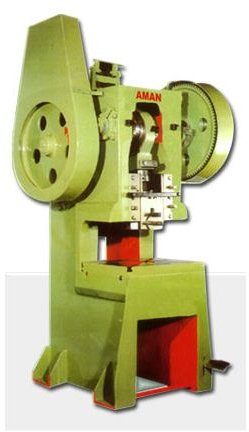What is Power Press Automation and Mass Production
Introduction
A power press is a very useful machine used in mass production mainly from cold working of ductile materials such as mild steel. Normally a power press has a rotating flywheel which acts like a storehouse of energy and is used to operate the ram which provides the necessary impact to the workpiece.
The various operations of the power press are performed using the components such as the bed, bolster plate and ram. There is also a mechanism which is known as knock out and its main function is to help eject the finished workpiece from the press tool. Since a huge impact is made on the workpiece it is necessary to ensure that proper cushioning is provided beneath the bolster. The adjacent image shows a typical power press which is used commonly is the manufacturing industry.
The operations carried out include a wide variety of processes such as bending, deep drawing, curling, piercing and so forth. Although power presses are quite fast, still they could be made even faster by automating them and this is what we are going to discuss in this article.
Automation in Power Presses
Time is money and this is equally true for a production line in industry. Hence engineers are always on the look out for making better machines and improvising on those machines to make them work even faster. The same thing applies to a power press wherein the production can be increased by over four times if automation is applied.
Before one could think about automating a mass production machine such as a power press, the main points to be considered are the least wastage of the raw material used in production, having proper security procedures in place and so on. Various other technical parameters are considered prior to automation design including current speed of the press, width of the stock etc.
Since it is important to have a continuous feed of the stock when performing automated operations using a power press, the stock is not fed in a straight fashion but from a circular loop which normally comes either in cradle wound format or reel format. The choice depends on the thickness of the sheet and reel type format is used for thinner sheets while cradle is used for thicker sheets.
The rolled sheet passes through a mechanism which straightens it out by removing any residual effect of the coiled arrangement. This is done by using various methods such as passing the sheet through a set of rollers and could be using a powered system for the same.
The sheet is then fed intermittently into the feeder where the necessary operations are performed at each increment.
The above process may seem quite simple yet a lot of things have to be considered so that the feed is done is a proper manner. All alignments should be nearly perfect otherwise there could be defect in the pieces that are manufactured which could result in wastage and loss of production.
It is important to mention at this stage that the process of automation does not only relate to making the stock getting fed automatically to the system but also should contain the provision to automatically eject the finished parts apart from a system from scrap removal. Last but not least there should be safety provisions in place so that the power press achieves automatic shutdown in case any dangerous situation develops.
Image Reference
Aman Power Press Co.
